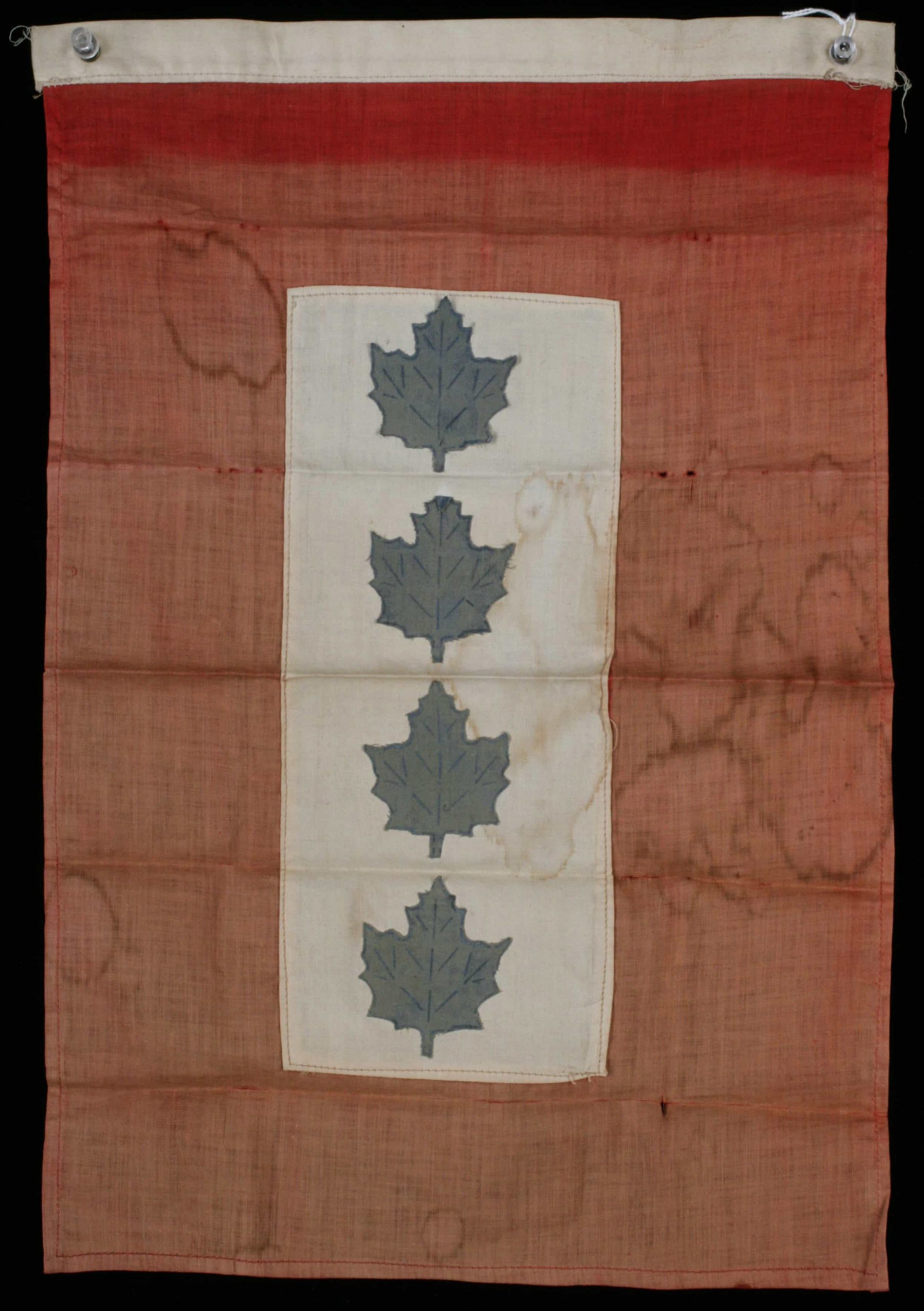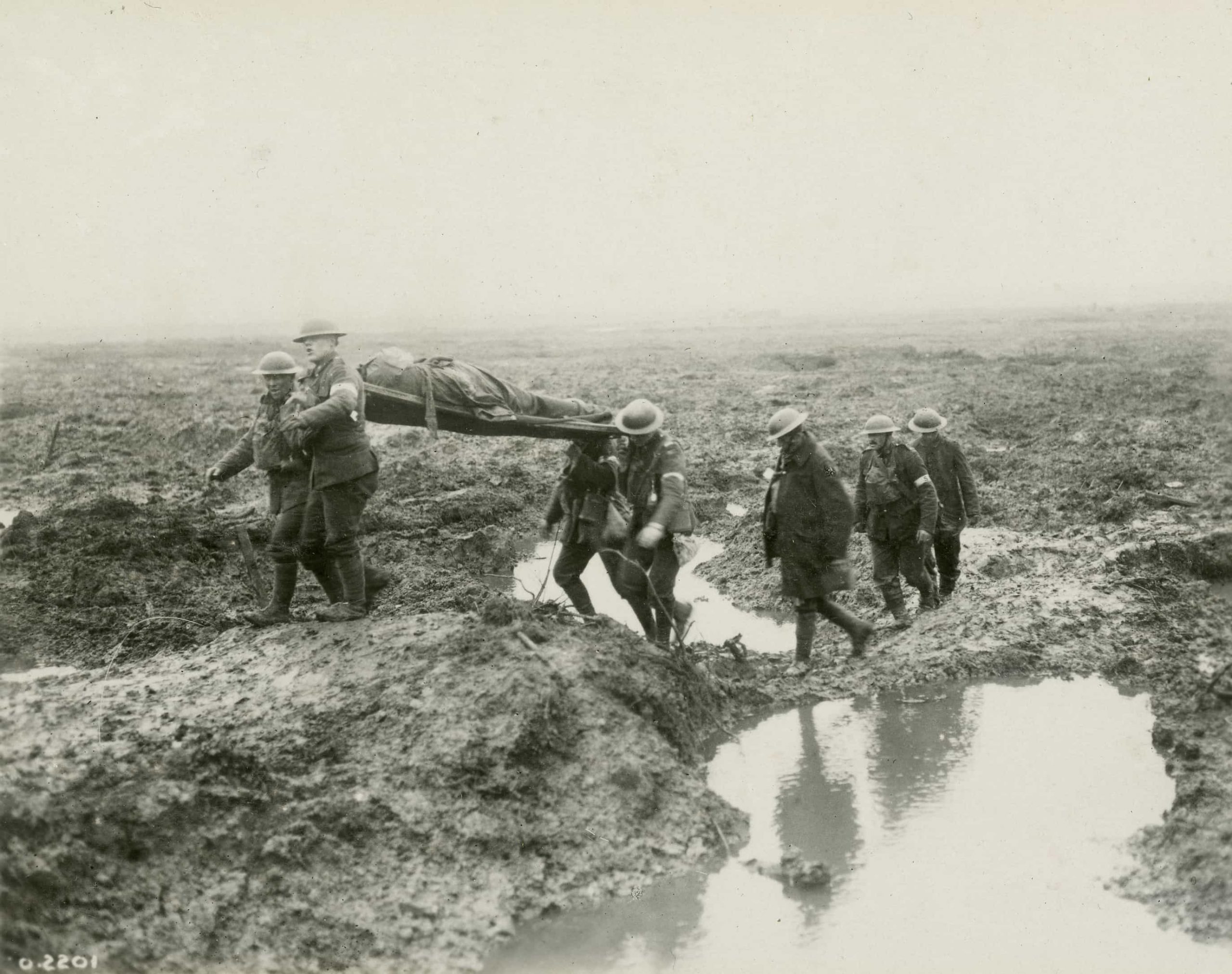The Canadian War Museum holds millions of objects in the National Collection. Each one tells a story. This flag shows how a simple object can tell us a lot about one family’s history.
More than 100 years ago, this flag was proudly displayed in the window of the Adie family home in St. Catharines, Ontario.
Used during both world wars, this type of flag was commonly known as a “mother’s service flag”. Each maple leaf represented a loved one who was serving overseas.
In the case of the Adie family, the four maple leaves represent four Adie brothers.
The first to enlist was 27-year-old Robert, who was a merchant.
He signed up in November 1914, just over three months after Canada entered the First World War. Robert served as a captain in France with the 19th Battalion until he was hit in the face and arm by shrapnel from an artillery shell. Badly injured and exhausted, he was transferred to England to recover.
There, he met and married his wife, Dorothy. He continued serving in England until he was discharged at the end of the war.
The next Adie brother to enlist was John, who was a writer.
He signed up in 1915, one month shy of his 32nd birthday. In February 1916, he was sent overseas, serving with the 1st Canadian Motor Machine Gun Brigade.
Eight days before the end of the war, Lieutenant John Adie died of gunshot wounds. He was 35 years old.
Twenty-year-old Allan was the third Adie brother to enlist, in July 1916.
He was sent to Europe in November 1916, serving as a gunner with the 8th Brigade, Canadian Field Artillery. Allan was killed in action a year later.
In his will, he divided his estate among his sisters, Mable and Jane, his nieces and nephews, and his mother, Frances.
The last of the Adie brothers to enlist was 25-year-old Archie.
He signed up on April 11, 1917 and served as an infantry soldier with the 18th Battalion. Private Adie died on April 10, 1918 from gunshot wounds to the abdomen and face. He had been serving in uniform for one year less a day at the time of his death.
The Adie family made an unimaginable sacrifice for the war effort. At the start of the war, John and Frances Adie had seven children: five boys —James, John, Robert, Archie and Allan — and two girls, Mable and Jane. Four of them served in the war.
Three were killed.
When members of the Adie family displayed their service flag in the window, they were letting neighbours know that four family members were serving overseas.
Some Canadians used the flags to show war deaths, painting a maple leaf a different colour when the person it represented was killed.
The Adies didn’t do that when Allan, then Archie and lastly John were killed.
Canadians proudly displayed mothers’ service flags in their windows during both world wars. The flags told neighbours something about the family and its service in contributing to the war effort. They also provided a tangible symbol of grief, sorrow and sacrifice.
Today, people still hang or post signs at their homes to show support, express ideas and mark events that are important to them.


